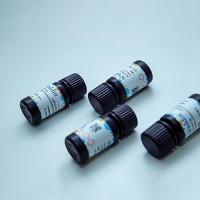Isolation of Coding Sequences from Genomic Regions Using Direct Selection
互联网
455
The rate-limiting steps in the positional cloning of disease genes are the identification of discrete genes within a large genomic region and the analysis of mutations in these genes. Direct selection is an expression-based gene identification technique that can rapidly identify cDNAs within large genomic regions. It has been successfully used in numerous positional cloning projects (1 –4 ). It can capture cDNAs that are expressed, temporally and spatially, in various tissue or cell types. The technique involves the hybridization of polymerase chain reaction (PCR)-amplifiable cDNAs to a genomic target. In our laboratory, these cDNAs are complex pools derived from multiple tissues. The cDNAs that are homologous to the genomic region are selected and subsequently enriched by PCR amplification, resulting in a set of cDNAs specific to the genomic target, with enrichment ranges from 1000- to 1000,000-fold (5 –7 ). These levels of enrichment, coupled with the use of cDNA pools, make the technique especially useful when searching for cDNAs that are expressed at very low levels in a complex tissue source.







